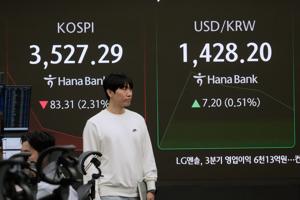U.S. stocks experienced a significant rebound on Monday, recovering more than half of the losses incurred during Friday’s sell-off. The S&P 500 surged by 1.6%, marking its strongest performance since May, while the Dow Jones Industrial Average climbed 1.3% and the Nasdaq Composite rose 2.2%. This turnaround followed President Donald Trump‘s remarks that softened his previous stance on China, alleviating fears of escalating trade tensions.
Investor sentiment improved sharply after Trump stated, “It will all be fine,” in reference to U.S.-China relations. His comments came just days after he threatened to impose significantly higher tariffs on Chinese imports, which had rattled markets. Trump assured the public that both he and Chinese President Xi Jinping do not wish to see detrimental economic outcomes for their respective nations, emphasizing, “The U.S.A. wants to help China, not hurt it!”
The market’s volatility echoes similar swings observed earlier this year, particularly in April, when Trump announced extensive tariffs, only to later ease his position to facilitate negotiations with other countries. Analysts from Morgan Stanley suggest that if current trade tensions diminish, a gradual recovery may extend through 2026, despite the recent turmoil.
While optimism about easing tariffs bolstered stock prices, concerns linger regarding the sustainability of market valuations. The S&P 500 remains close to its all-time high, following a remarkable 35% increase from its April lows. Critics argue that prices have outpaced corporate earnings, raising doubts about the long-term viability of such valuations.
Simultaneously, excitement surrounding advancements in artificial intelligence contributed to market enthusiasm. Shares of Broadcom surged 9.5% after the company announced a collaboration with OpenAI to develop custom AI accelerators. As the upcoming earnings reporting season approaches, with major companies like JPMorgan Chase and United Airlines scheduled to report, investors are keenly watching for signs of profitability amid these developments.
While the U.S. market rallied, global stock indexes presented a mixed picture. European markets edged higher after facing losses in Asia, where Hong Kong and Shanghai stocks fell by 1.5% and 0.2%, respectively. China reported an 8.3% increase in global exports for September, the strongest growth in six months, suggesting a shift in sales focus towards markets outside the United States.
As the trade landscape evolves, the upcoming days will be crucial for investors navigating the complexities of U.S.-China relations and the broader economic implications.
